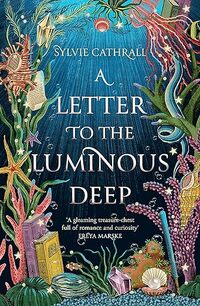Despite having written four novels and numerous stories, and teaching fiction at
UCLA Extension, Book Passage and elsewhere, the whole notion of what makes a
character compelling, or how to construct such a character, continues to feel
like mercury in my palm.
Just when that inscrutable line is crossed, between a fully realized character
and one not so fully realized, remains as enigmatic to me now as ever--perhaps
more so.
Recently, I told a writer friend that I've come to use music more and more in my
characterizations, sometimes thinking of characters as chords, or melodies, or
allowing the timbre of a particular instrument to inspire an insight into their
inner life.
If a chord inspires a character, it can be quite simple, a dyad or triad:
straightforward, clear, with a distinct tonal character: A vigorous, optimistic
soul for example (G major), or a fragile worrier (C sharp minor). Or the chord
and character can assume more complexity as I probe quirks, secrets, miseries,
joys, regrets, contradictions. The result here is more complicated, tonal
clusters of stacked thirds, jarring minor seconds, sprawling ninths and
elevenths, diminished sixths, augmented fourths. These too have a distinct tonal
sense but it's not easily discernible at first; the notes clash and resonate
against each other, creating jarring or limpid harmonics.
In my most recent novel, Do
They Know I'm Running?, I used a piano piece by Faure, a ballade I
always associated with my father, to conjure for me the gentle inner life of an
otherwise rustic Salvadoran truck driver, Tío Faustino. And the sly, sensitive
protagonist, a budding guitar phenom named Roque, needed a blistering Santana
solo to create a sense of the fire and hunger within him, of which even he is
unaware as the story begins. His aunt, Tía Lucha, is a reedy woman who, not
surprisingly, made me think of a clarinet, an instrument which, even at its most
playful, retains a certain wistful tone of lamentation. And Godo, the marine who
returns from Iraq both psychologically and physically damaged, found partial
inspiration in the jarring, grinding, mocking intro to Control Machete's Sí
Señor.
This sense of an ensemble of sounds and tonalities helped me immeasurably as I
put these characters in crisis: Just as Godo returns from Iraq in pieces, the
family is hit with a second sforzando in the arrest and deportation of
the family breadwinner, Tío Faustino. Because music exists in time, I was
capable of allowing the original sense of these characters to change and morph
as the action developed without altering their essential nature, in the same way
a chord progression or a melody will unveil itself as a song unfolds.
But I'm a musical bird, and such formulations suit me. I can imagine someone
else using colors or animals or trees or tarot symbols in much the same way. The
trick is to conjure an image that stirs to life, and the willingness not to
define it, explain it, figure it out, but to let it assume shape and form and
sense on its own. There's no small bit of magic involved, like a melody that
rises up in the mind seemingly from nowhere--or, again, like mercury, quivering
at my touch: shimmering, slippery, but substantial all the same.
9 comments posted.
The use of music (or color, animals, or trees) makes much more sense to me than some of the articles I have read. Many thanks.
(Karin Tillotson 4:02pm March 18, 2010)
Thanks for inviting us in to how you get those creative characters moving. Music to convey a mood gets me in line with the characters I want to create and the dialogue that's key to moving the action.
(Alyson Widen 5:20pm March 18, 2010)
Today's post gave an interesting looking into the development of your characters. It is always nteresting to get a peek behind the curtain. Thank you for explaining your creative process.
(Rosemary Krejsa 7:00pm March 18, 2010)
Thank you all for taking the time to read my piece and write such lovely comments. I'm glad what I wrote was interesting. And I'm sorry I didn't respond yesterday -- I waited till noon then had things I had to go out and do (I'm on a book tour for my latest novel, DO THEY KNOW I'M RUNNING?). Yes, character remains mysterious but not inaccessible. There are ways to invite the Muse to come closer. And if paiting or another method works for us: USE IT.
All the best,
David
(David Corbett 11:37am March 19, 2010)
I believe that is is alwaays amazing to me to be able to see how authors develope their characters and stories. My mind just doesn't work that way!
Thank you!
dancealert at aol dot com
(Brenda Rupp 9:45pm March 19, 2010)


 © 2003-2024 off-the-edge.net
all rights reserved Privacy Policy
© 2003-2024 off-the-edge.net
all rights reserved Privacy Policy